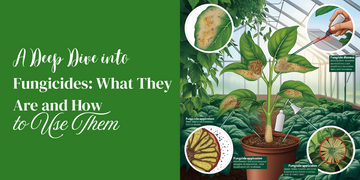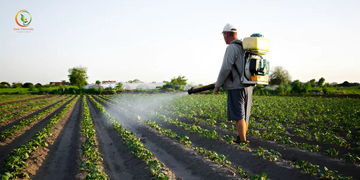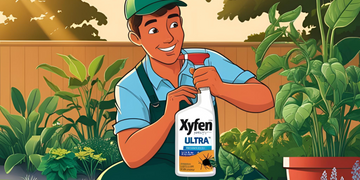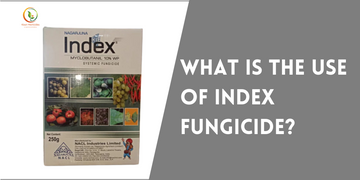In agriculture, crop health is everything. One of the most insidious threats to crop health is fungal infection. Fungal diseases can devastate crops, reduce quality, and generate giant costs for farmers. That's where fungicides enter the picture—a vital line of defense in contemporary agriculture. In this blog, we’ll take a detailed look at what Fungicides are, how they work, the types available, when and how to use them, and why trusted names like Kisan Pesticides are leading the way in sustainable plant protection.
What Are Fungicides?
Fungicides are chemical or biologic materials applied for killing or preventing the growth of fungi and their spores. Fungicides are usually applied to manage plant disease caused by fungal pathogens, including blights, rusts, mildews, and molds. Fungi may infect any plant part—roots, leaves, etc.—and if not controlled, can seriously affect plant growth and yield.
Fungicides may:
- Protective (Preventive): Used prior to the infection to inhibit fungal growth.
- Curative: Used after the infection has taken place to halt its spread.
- Eradicative: Used to destroy existing infections.
How Do Fungicides Work?
Fungicides act by inhibiting the biochemical activity of fungi. They can interfere with cell membrane construction, prevent spore germination, or inhibit essential enzymes the fungus requires for growth. Based on the type of formulation, some fungicides target specific sites (site-specific fungicides), while others affect multiple targets (multi-site fungicides).
For example, Kisan Pesticides produces its fungicides with preventive as well as curative effects to provide wide-range protection. Its products are specially designed to provide maximum effectiveness while being environment- and crop-friendly.
Types of Fungicides
Different types of fungicides, depending on mode of application as well as their chemical makeup, are available. This information guides the choice of the correct product for your crop:
1. Contact Fungicides
These are on the outside surface of the plant and won't penetrate.
They offer fast action by coating with a surface film that deters fungal spores.
Use the best for use preventatively.
Example: Kisan Pesticides' copper-based fungicides find extensive application as contact fungicides on crops such as tomatoes and potatoes.
2. Systemic Fungicides
They get absorbed by the plant and redistributed by it throughout its tissues.
Provide preventive and curative actions.
Tended to be used when initial indications of infection become apparent.
Commodities such as Kisan Pesticides systemic fungicides are produced to provide lasting protection and have become very popular with forward-looking farmers.
3. Biological Fungicides
Derived from organisms that are naturally occurring or are their by-products.
Environmentally friendly and organic farming friendly.
Kisan Pesticides also provides biological solutions under its sustainable agriculture program.
When to Use Fungicides?
Timing is everything when applying fungicides. These are some of the decisive moments to keep in mind:
- At the start of the growing season: Stop fungal spores from becoming established.
- During wet weather and high humidity: Fungi love damp conditions, so protective spraying is necessary.
- At disease onset: Curative fungicides can prevent further spread.
- In crop rotation planning, pre-plant fungicide treatment can control residual diseases from last season.
Kisan Pesticides has a line of fungicides appropriate for each of these timings, which are supported by research and field trials to maximize their effectiveness.
How to Apply Fungicides Correctly
Correct use is vital to optimizing the benefit from fungicides while avoiding damage to the environment. Following are key tips:
Types of Fungicides
There are several types of fungicides depending on their application mode and chemical makeup. Knowing them assists in choosing the correct product for your crop:
1. Contact Fungicides
These remain on the plant's surface and do not penetrate.
They offer quick protection by creating a barrier against fungal spores.
Perfect for preventive application.
Example: Copper-based fungicides of Kisan Pesticides are commonly used as contact fungicides on crops such as tomatoes and potatoes.
2. Systemic Fungicides
The chemical penetrates plant tissues upon absorption, where it distributes in various parts of the plant.
These fungicides stop infection as well as cure infections.
This method is applicable if growers notice early signs of infection.
Kisan Pesticides' systemic fungicide products are long-term solutions that are often used by advanced farmers.
3. Biological Fungicides
Manufactured from natural organisms or their by-products.
Environmentally friendly and organic farming is safe.
Kisan Pesticides expands its sustainable agriculture initiative by providing biological solutions to clients.
When Do You Use Fungicides?
Fungicide application needs ideal timing to be effective in its objectives. Critical information includes these aspects.
The initial part of the season calls for preventing fungal spores from establishing themselves.
When humidity is at its peak with rain conditions, fungi have an optimal environment; therefore, you must guard against fungicide application.
Curative fungicides must be used whenever any disease symptom shows up on your crops since they will halt the disease from spreading.
Pre-plant application of fungicides assists in managing residual diseases that overwintered from previous seasons during crop rotation planning.
Kisan Pesticides' fungicides last for varying durations since they integrate research and field-testing outcomes for optimal performance.
How to Apply Fungicides Correctly
The correct application methods decide the extent to which fungicides work best without destroying natural systems. Here are the main tips:
Instructions
1. Choose the Right Fungicide
You must identify the precise fungal disease that affects your crops.
Use a specific product. The agricultural advisory program of Kisan Pesticides offers farmers product information that suits various crops.
2. Use the Right Dosage
Overuse can generate resistance and harm the environment.
Poor use may not be effective.
Always read the label. Kisan Pesticides boasts detailed instructions and QR code support for easy access to instructions for use.
3. Use Appropriate Equipment
Use clean sprayers.
Deliver even coverage on leaves, stems, and soil (if relevant).
Wear protective gear upon application.
4. Rotate Fungicides
Switch between fungicides with distinct modes of action to prevent resistance development.
Kisan Pesticides technical advisers recommend rotation programs for farmers to implement.
5. Inspect and Reapply If Needed
Fungicides are washed off by rain or degraded in sunlight.
Reapplication would be necessary, depending on environmental and crop conditions.
Why Choose Kisan Pesticides for Your Fungicide Needs?
With more than three decades of experience in crop protection, Kisan Pesticides has acquired a household name for quality and trust. Here's why farmers are increasingly choosing Kisan Pesticides for their fungicide needs:
- Complete Product Range: From copper oxychloride to carbendazim and triazole-based products to biological products, Kisan Pesticides has the entire gamut.
- High Standards: Each product is subjected to rigorous quality tests for purity, safety, and effectiveness.
- Field-Driven Innovation: Kisan Pesticides collaborates with agronomists and scientists to formulate solutions according to Indian soil and climate conditions.
- Farmer Education: The brand focuses on community outreach, providing workshops, digital guides, and ground-level support for optimal fungicide usage practices.
- Environmentally Friendly Agriculture: With a growing emphasis on sustainability, Kisan Pesticides is encouraging biological and low-residue fungicides that conform to international best practices.
Typical Errors to Avoid When Applying Fungicides
Even veteran farmers can fall into traps that minimize fungicide performance. Avoid the following:
- Waiting until infection spreads.
- Combining incompatible chemicals that lower efficiency or harm crops.
- Not heeding weather conditions, e.g., spraying ahead of rain.
- Omitting personal protection when applying.
With the guidance of Kisan Pesticides' specialist expertise, farmers are able to steer clear of all these traps and achieve optimal returns every time.
Conclusion
Fungicides are a vital component in the farmer's arsenal. Used with proper application, they can make an enormous difference in the crop health, yield, and profitability of the farmer. With fungal infections becoming increasingly aggressive because of climate change, the need for dependable, science-based solutions such as those from Kisan Pesticides cannot be overemphasized.
Whether you're combating powdery mildew on cucumbers, rust on wheat, or blight on potatoes, Kisan Pesticides offers a fungicide solution for your purposes. With proper knowledge, application methods, and products, farmers can keep their crops healthy and productive year after year.
To learn more about which fungicide is best for your crop or to speak with a Kisan Pesticides specialist, go to their official website or call your local distributor today.




